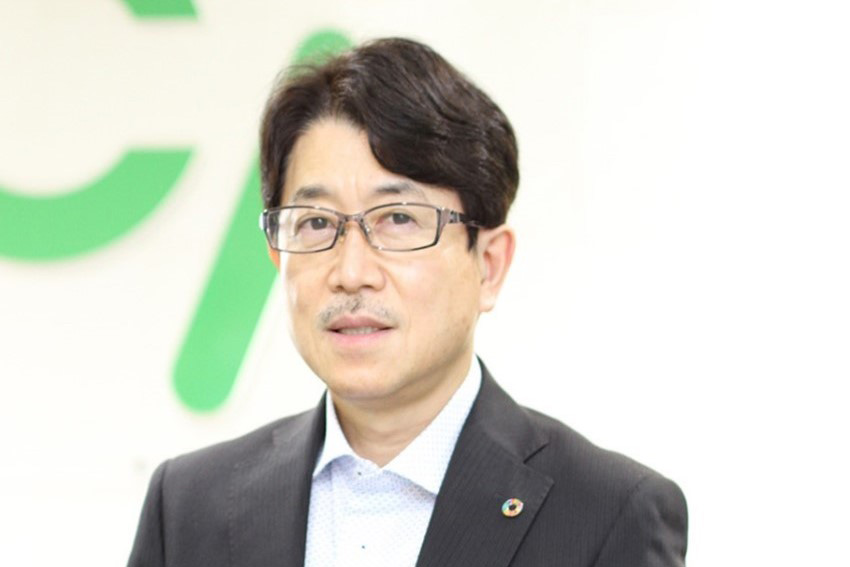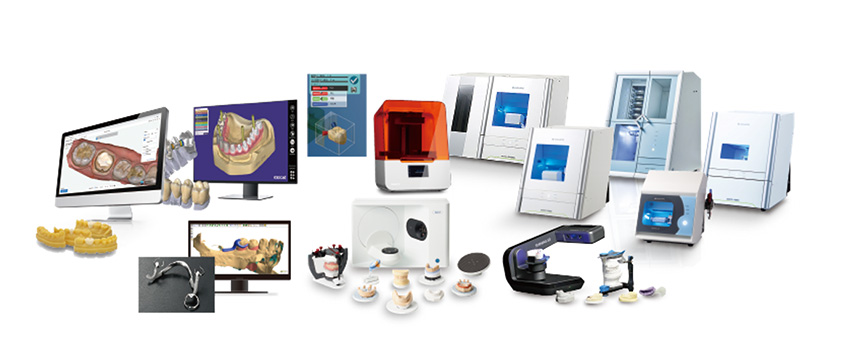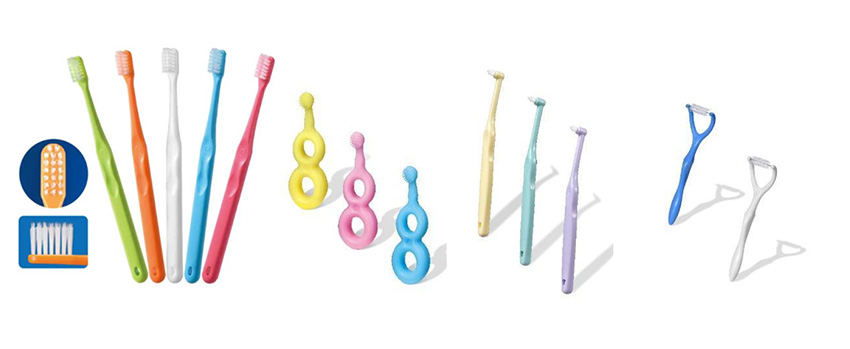Since 2000 Ci Medical has been selling medical equipment with a sense of reliability, quality, and affordability.

Japanese companies are facing several challenges, including production bottlenecks and rising input costs. However, their reputation for innovation, good products, and technology positions their products very favorably in the international market. The weakened Japanese yen also means that products made in Japan have never been more cost-effective to buy. What do you believe are the strengths of Japanese firms and what differentiates them from regional competitors?
Overseas products are generally not so meticulous in terms of manufacturing, whereas Japanese products are very detailed and precise in their measurements. From a design perspective, Japanese companies are very focused on details, and that is one of their strengths. Also, overseas companies seem to focus on IT and cutting-edge technology, but they don’t usually focus on low-technology products like toothbrushes. Ci has focused on this and also has a wide range of product valuations, from toothbrushes to large machines such as CTs, software, and electric power.
Another challenge that Japanese companies face is the decline of the local population. It’s estimated that by 2040, Japan will face a shortage of over 10 million workers. This is, of course, leading to a shrinking domestic market and making it difficult for companies to hire staff. How is your company tackling these challenges, and to what extent do you believe Japanese firms need to look abroad?
We have to improve productivity, so in our logistics centers we introduced new material handling machines that can handle more with fewer people. We have also hired over 100 overseas workers from Bangladesh, China, Korea, and Vietnam. There are many niche markets in Japan, and as times change, new needs will emerge. The first step is to develop these markets and make the products desirable for overseas expansion, thereby alleviating the effects of the shrinking domestic market.
You mentioned introducing technology, and we’re seeing a lot of new technology developments being introduced into the dental industry with the rise of 3D printing and the use of AI, not to mention the Dentbird AI partnership that you recently launched. What role do you see digital technology advances having in the dental industry in the future?

For the computer-aided design and computer-aided manufacturing (CAD/CAM) industry, we have been pioneering this field for a long time. At first, our company was small, and we thought that if we did business in the ordinary way, we would not grow quickly, so we focused on CAD/CAM, which was not very popular at the time. Typically, the CAD/CAM industry was a closed system where a manufacturer's machine could only be used with that manufacturer's materials, but we were probably the first to open it up, which was beneficial to our customers and led to our growth.
We also have a CAD/CAM laboratory center and have been working with manufacturers on materials and other research. In terms of software, we have been working together with the machine maker Roland, which has the leading market share in the industry. We work together with the manufacturer on system development which has led to enhanced sales. We also have an in-house expert CAM software engineer to develop our own CAM programming applications for new materials.
With the decreasing population and labor force, we have to focus on efficiency. Dental technology is an area that requires higher-level of craftsmanship, which is labor intensive, but we are focusing on digital transformation (DX) because it will increase productivity and lead to cost reductions.
We are always researching what our customers want and need. Since energy costs are increasing, we also sell electricity. We are also working on an automated appointment system and a system to automate the handling of inquiries before a consultation, which can be enabled on the Internet. In addition, IOS (intraoral scanners) are currently attracting attention due to the expansion of insurance coverage. All of that will enhance a clinic's efficiency and reduce costs and labor needs.
I was interested to see that your 3D design lab is using machines that were converted from industrial use for dentistry, using high-precision materials. Could you tell us about the process or challenges you found in converting machines for industrial use into dental use and how you ensure the machines are highly precise as well?
At first, we could not find any good machines in Japan, and the large and expensive machines from Germany were superior, so we visited the manufacturer's factory to check them carefully before installing them.
Also, being a dentist myself allows me to construct a valuable perspective on the matter. In addition, by listening to specific opinions from dentists and peers, we have been able to quickly provide products that incorporate even the most detailed opinions.
Regarding the high-precision materials, we don’t make any materials ourselves, but when new materials become available, we have to make our own CAM programs. For this reason, we have strengthened our relationship with manufacturers and have a dedicated CAM engineer working with them.
I have a question about your Ci toothbrush, which is one of your flagship products. You mentioned earlier that overseas companies that manufacture toothbrushes do not focus on precision or quality. The main strength of the toothbrush, if I’m not mistaken, is the flocking, and you’re able to manufacture your toothbrushes at a low price and high quality while using state-of-the-art flocking technology. Could you elaborate on the key features behind the technology and how it differentiates your product from your competitors, both domestically and overseas?

Our development team, made up of dentists and hygienists, is constantly making minor improvements and advancements based on clinical treatment. We also challenge the limits of technology, such as the thinness of the head, with manufacturers, learning from our mistakes and expanding the limits of what we can do.
Furthermore, we deal with various makers and introduce a wide range of good technology quickly, so that’s our strength. We also know the market very well.
You mentioned your research and development process, which Japanese companies are famous for. Japan spends 3% of its GDP on R&D, compared to half of that for China and 2% for the US. Could you tell us a bit more about your R&D strategy?
By being a trading company, we work with various companies and combine their strengths in order to develop products There aren’t many other companies that can do that. Many companies focus on a specific technology, but we have a wide perspective. For example, for CAD/CAM, we can mix Computed Tomography (CT) and software technology with knowledge of materials and clinical therapeutic experience in implants and orthodontics.
You mentioned the importance of working together. This is something that we’ve seen as important with partnerships, not only for exchanging information but also for trying to open up new markets. Are you currently looking for new partnerships in different areas, especially in overseas markets?
Yes, we are working to strengthen the relationships we have with existing companies and we will also seek new relationships.
Is there any market that you’ve identified as one that you’d like to strengthen the relationship with in the future?
We would like to strengthen the dental laboratory market, especially the CAD/CAM business and 3D printing.
I would like to ask you about telemedicine because after COVID, we’ve seen how telemedicine has taken a major role in the healthcare industry. How do you envision the future of the dental industry and what role do you think digital transformation and new technologies like telemedicine will play in the industry?
I believe that it will make medical care more accessible and will benefit patients and medical institutions in terms of cost and efficiency.
I believe that X-ray readings and IOS data on the oral cavity will be beneficial.
Also, it could be said that Japan is lagging behind in this regard, but it is something that will be necessary in the future, so we would like to study and get more involved.
What steps have you taken to venture into this area as of today?
First, we’d like to develop and provide software. The insurance system in Japan has a very specific structure, so we need to get into that as well. And currently, we are creating websites for about 5% of Japan’s dental clinics, but surprisingly, about 50% of the dental clinics in Japan do not have a website. There are some dentists who just post their websites for sales purposes, but they are not likely to have their own website. We are number one in terms of managing websites in the dental industry, and we are looking to build on that further.
Also, five years ago we developed an online medical examination system, but it did not work out. Now we are moving forward from IOS to technical engineering including CT, orthodontics, implants, including the development of software for each of them.
Your company was founded in 2000, so you have 24 years of history, which makes you a young company by Japanese standards. But if we look at the financial performance of your company, you’ve been able to achieve an impressive turnover, JPY 45 billion, in just 24 years. Not many companies can reach these numbers in such a short period. And you’ve also had a 12% increase in turnover from 2020 to 2023. To what do you attribute the success of your company and what strategy are you implementing to continue this corporate growth in the future?
We are forecasting sales for the next fiscal year to be JPY 100 billion. This increase is mainly due to M&A for laboratory and mail order companies. We recently passed a resolution to acquire Nissen from Seven & i Holdings.
As for the factors behind our success, we operate our own logistics center, call center, and nationwide showrooms, and we have many hardworking employees in attendance.
We also believe that the reason for our success is that we have aimed to become a manufacturing-based retailer by developing what the market demands, rather than buying from manufacturers and selling them, and that we have pioneered CAD/CAM, electric power sales, and dental software development in Japan.
Our strategy for the future is to expand our mail order business based on logistics and to create a technological network based on technological software.
You’re not only focused on the domestic market here in Japan, but you’ve also expanded into Korea and Hong Kong. Are you planning to continue this international expansion, and if so, have you identified any particular markets which you want to expand into?
Since the yen is weak now, it is best that imports and exports are on an equal footing so as not to be affected by the exchange rate. When we entered the overseas market and established Ci Korea, COVID-19 started, so things were frozen, but we have resumed it. There is already a big company in Europe and the U.S., Henry Schein, so we will focus on the Asian region, and next we will focus on Vietnam and Southeast Asia.
You’re also a trading company and you just mentioned exports and imports. Right now, there are two things we’re seeing. First is that many countries are trying to decouple from China and find more reliable suppliers, because of what happened during COVID. Second, the Japanese yen is devalued. How is your company dealing with these two things that are affecting the Japanese economy and companies, and what are the benefits and the disadvantages of this situation for you?
That’s a difficult question. We have reliable partners in China, so there is no particular national consciousness. Now, with the devalued yen, it is a difficult situation since our main business is imports, but the same is true for our competitors, so we are not concerned about that. Unfortunately, though, we have to deal with price shifting. Also, we want to focus on new products that are not currently in the market rather than selling existing products, cheaply. The market is changing, and products are adapting to the changes and we are quick to introduce new products to the market. For example, there may be some new technology that cannot be applied directly to the dental industry, but we can combine it with other technology and then apply it to the industry, so the environment is changing and customers will embrace new values in new products to the market. Another thing we are focusing on is reducing costs. We believe that this current situation is advantageous for us because we act faster than other companies.
You mentioned that before you were a dentist. What does that background and expertise bring to the company and to your customers?
Most companies do business around the idea of how to sell products, but we see things from the perspective of the buyer and gain insight into what kind of products they want to buy and at what price. This is our mindset. We also understand the psychological aspects of the customers and our strength is that we can analyze what kind of marketing is best for them.
You highlighted that you are looking to bring new products to the market. When you do so, what type of training do you provide to your customers to know how to manage these products?
For products that need explanation or training, QR codes are posted on promotional materials. We also have showrooms all over Japan where we can provide education and training. In addition, we have 50 to 60 sales representatives throughout Japan who can be reached by phone for consultation or to participate in seminars held on an irregular basis. We also started a video seminar transmission business during the coronavirus pandemic and are putting a lot of effort into it.
Your company this year is celebrating its 24th anniversary. Imagine that we come back six years from now for your 30th anniversary and we have this interview again. What would you tell us? What are the dreams and goals that you would like to accomplish over the next six years?
We are focused on tackling the challenges of the present moment instead of looking to the long term future. Currently, we have two growth strategies. The first one is to capitalize on our advantages in logistics and location to expand as a mail order company. The second one is to focus on the digitalization of dentistry. Right now, the dental laboratory has a lot of waste, so we want to use AI such as DentBird to increase efficiency. To do that, we need to expand our scale, so we plan to expand the laboratory group. If we expand our scale, we can invest in cutting-edge technologies, so we would like to replace our current machines as quickly as possible. I would like to concentrate on these things at the moment, and as a result, I believe that I will be able to see new dreams and goals, and I would like to take up the challenge of achieving them.
For more information, visit their website at: https://ci-medical.co.jp/
0 COMMENTS